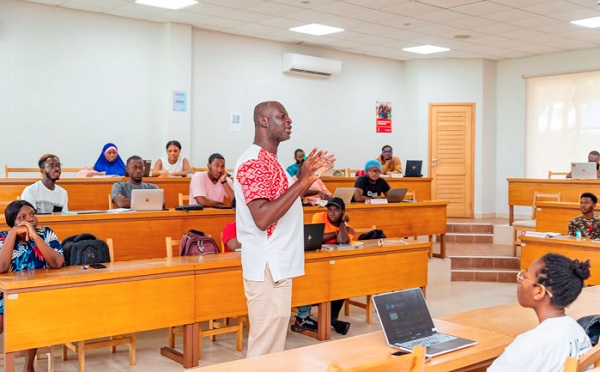
Teaching in the age of artificial intelligence
Artificial Intelligence (AI) is rapidly changing our world.
Advertisement
It has significant and far-reaching implications for what and how we should teach, and we must reflect on these implications.
How can we equip the next generation with the discernment and ethics required to navigate this new world?
Artificial Intelligence is the development of computer systems to perform tasks we usually associate with humans.
For example, human intelligence enables us to solve problems, learn from patterns in data, and so on.
A human looks at the world around them and can easily make observations such as "the blue car is driving down the road, while a pedestrian is waiting to cross at the traffic light".
Such a seemingly simple observation is not an easy task for a computing device such as a computer or a phone.
When we endow a computing device with the ability to perform such tasks through software and systems we develop, we describe this as "artificial intelligence" or AI.
AI is embedded in many of the systems we use every day.
For example, if we use Google Maps or a similar tool to find directions to a location, we are interacting with AI technology.
AI is resurging due to rapid progress in previously impossible areas.
Recent developments impacting us include the development of “large language models” that have enabled the creation of chatbots (for example, ChatGPT or Google Bard) that can answer questions and hold highly realistic and often very useful conversations.
Opportunities
More broadly, this type of AI falls into the category of what is described as “generative AI”.
This new wave presents significant opportunities for enhancing the way we teach and learn.
However, it is essential to understand that AI tools, as with all technology, are imperfect.
AI tools can generate very plausible sounding content which may not necessarily be accurate.
I asked Canva, which also has a generative AI tool, to show an image of "floods inside the Cape Coast Castle in Ghana”, and it generated a very realistic image which was completely fake.
AI can also give biased information based on the data that it is trained with.
When I asked an image generation tool to generate images of “a doctor in Ghana" it created four pictures of male doctors.
These new developments in AI, though exciting, can also be challenging and worrying for teachers.
How do we know that our students are doing the work themselves and hence learning, rather than simply relying on content generated by AI?
Do we believe information just as it is shared by these tools?
If students see content, do they know how to look for cues that may help them understand whether something is real or an AI-generated fake?
If students simply use AI tools as a shortcut to complete assignments and tasks, this severely limits their abilities.
As teachers, we know that every assignment we give students has learning objectives, and they only achieve them by doing the work and going through the process themselves.
Just as we would not want them to simply copy a solution from a classmate, neither do we want them to do so with AI.
Motivating students
This is why this new age requires us to think carefully about what problems students may face as they engage the world and design our teaching material and projects to help them develop the skills and knowledge to tackle these problems meaningfully.
Being explicit with students about what they are learning and why, and discussing how to use the tools to enhance rather than defeat the learning objectives, helps motivate them to be more intentional about their education.
It also enables us to emphasise the ethical posture we are helping students develop as we establish the current and future implications of taking credit for work they have not done.
Our students must also have the skills to participate, not simply as consumers of this technology, but as shapers of it; applying it in creative ways to address pressing problems, and helping formulate relevant policies to guard against potential harmfulness.
That means our students need much more awareness of computer science and its subdisciplines of machine learning and AI.
This is important to us at Ashesi.
We are taking steps each year to help our students increase their awareness, introducing programmes focused on these skill areas.
Our third-decade strategic plan includes starting a new Master's programme in Intelligent Computing Systems that will bring advanced machine learning and AI education to students.
We also support research in these areas, adding locally relevant knowledge to the world's understanding of AI applications.
Being humane
However, as we teach students how to harness this technology, we must also teach them what it means to be human.
They must be able to enhance and apply those human qualities, such as empathy, critical thinking, ethics, and creativity, that are not easily replicated by AI.
We must help them value ethics and understand the harm that could come from using AI in unethical ways.
Educating their heads and hearts can help our students confidently navigate this new world and create new tools that advance economic and social well-being in Africa.
The writer is the Head of Computer Science at Ashesi University, where she teaches machine learning, robotics, data structures, algorithm design, and programming.




